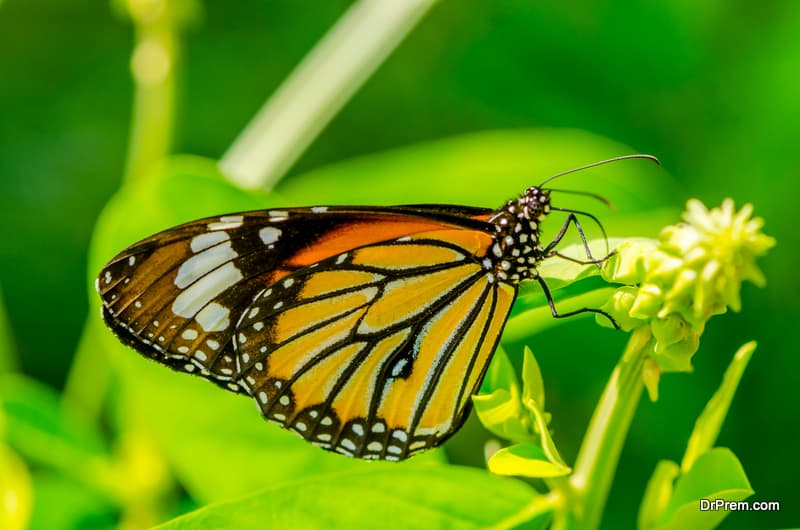Despite the theory that states that natural selection works slowly and steadily towards a definite and distinct goal and it occurs in hundreds and thousands of years, scientists think they have witnessed the fastest evolutionary changes in a specific species of a butterfly. A report confirmed recently.
The tropical blue moon butterfly Hypolimnas bolina has developed a way to fight parasitic bacteria by means of genetic modification within as less as six years only to help the male species survive the parasitic attack.
Six years ago male species was counted as only 1% of the total population of blue moon butterflies on two islands in the South Pacific. Blame the Wolbachia bacteria, which kill the male embryo even before their hatching. But by last year the butterflies have developed a ‘suppressor‘ gene to keep the bacteria in check and the male population has grown to 40% of the total population, balancing the sex ratio.
According to Dr. Sylvain Charlat, of University College London, UK,
To my knowledge, this is the fastest evolutionary change that has ever been observed
Scientists all over concerned with this matter are surprised to see this abnormally quick natural selection. According to Gregory Hurst, a University College researcher who worked with Mr Charlat
We usually think of natural selection as acting slowly, over hundreds of thousands of years. But the example in this study happened in the blink of the eye, in terms of evolutionary time, and is a remarkable thing to get to observe
The team started documenting the massive imbalance in the sex ratio of this species in the year 2001 on the Samoan islands of Savaii and Upolu. The same team have started a new servey after male sightings increased in Upolu. They noticed the number either has reached that of females or approaching it.
This in fact was very surprising for them as they did not have any clue how this could be possible. Fresh research started all over again and the result found was quite surprising. The researchers are not yet confirmed whether the gene has emerged from a mutation in local species or has been introduced by migratory butterflies from other parts of the World where the mutation already existed.
They said that this could be the effect of natural selection, the vital factor in which traits in a species that help the species survive become more prominent in a population.
Mr Charlet found quoted in an interview
We’re witnessing an evolutionary arms race between the parasite and the host. This strengthens the view that parasites can be major drivers in evolution
Source: BBC News


